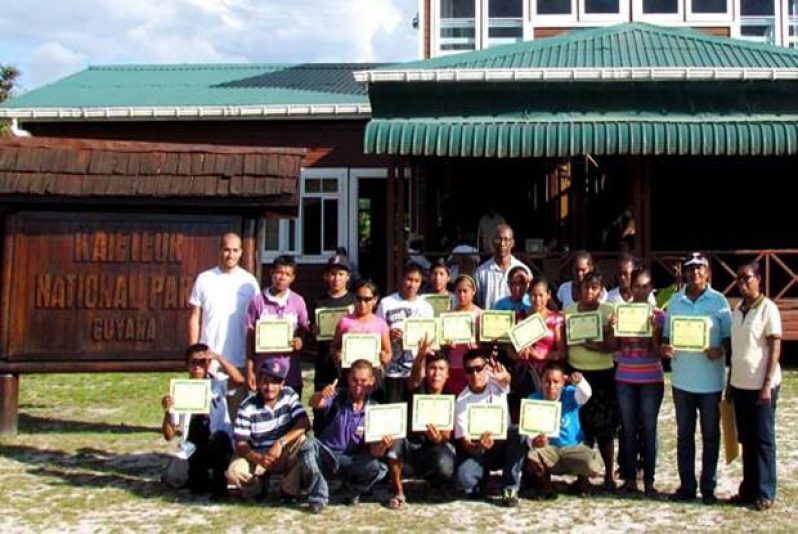NINETEEN persons successfully completed an initial training course on tour guiding at the Kaieteur National Park last Sunday. The training, which was funded by WWF Guianas, was the result of a collaborative effort between the Ministry of Natural Resources and the Environment through the Protected Areas Commission (PAC) and WWF, towards developing a pool of persons capable of conducting guided tours at Kaieteur National Park.
Most of the participants were from Amerindian villages and communities from Region 8 including Chenapau, Karisparu, Paramakatoi and Mahdia. Two staff members of the Kaieteur National Park also participated in the training course, which included Tour Guiding Techniques and Communication Skills; Conservation and Protected Areas; Botany; Geology; Wildlife and Tourism at Kaieteur Top as well as History, Folklore and People of the Kaieteur Area.
On the final two days of the course, trainees were also able to participate in guiding actual tourists who were visiting the Kaieteur Park.
This training is part of a larger effort initiated by the ministry through the PAC to improve the services at the Kaieteur National Park and the upgrade of accommodation for both visitors and staff. The Commission is also working with WWF to finalise Kaieteur’s first ever management plan, which will provide a logical framework for the development and conservation of the area.
This training exercise is a component of a wider programme launched by the Minister of Natural Resources and the Environment, Robert Persaud; the Three Parks Initiative, which aims to transform the urban landscape of Georgetown. The overall objective of the Three Parks Initiative is to enhance and rehabilitate key facilities and infrastructure in each of these “green” spaces, thereby improving the quality of services provided to the public.
The initiative aims to address the issues of flooding, drainage, security and aging recreational facilities in the three Parks. A number of facilities also have been identified for restoration, including historical features such as bridges, kokers, a floral clock, and scenic trails. The zoo in particular, which was designed and built in the mid to late 1900s, will receive renewed attention.
Meanwhile, the ministry in collaboration with the Seattle-based PJA Architects, which specialises in zoo design, has already developed an initial zoning plan for the transformation of the zoo. This zoning plan will form the basis for a long-term master-plan to ensure that this rehabilitation effort is informed by international best-practices in zoo husbandry, and sustainable in the long-run. The plan will benefit from ongoing public consultations, and will provide a framework to address many of the zoo’s challenges.



.jpg)








